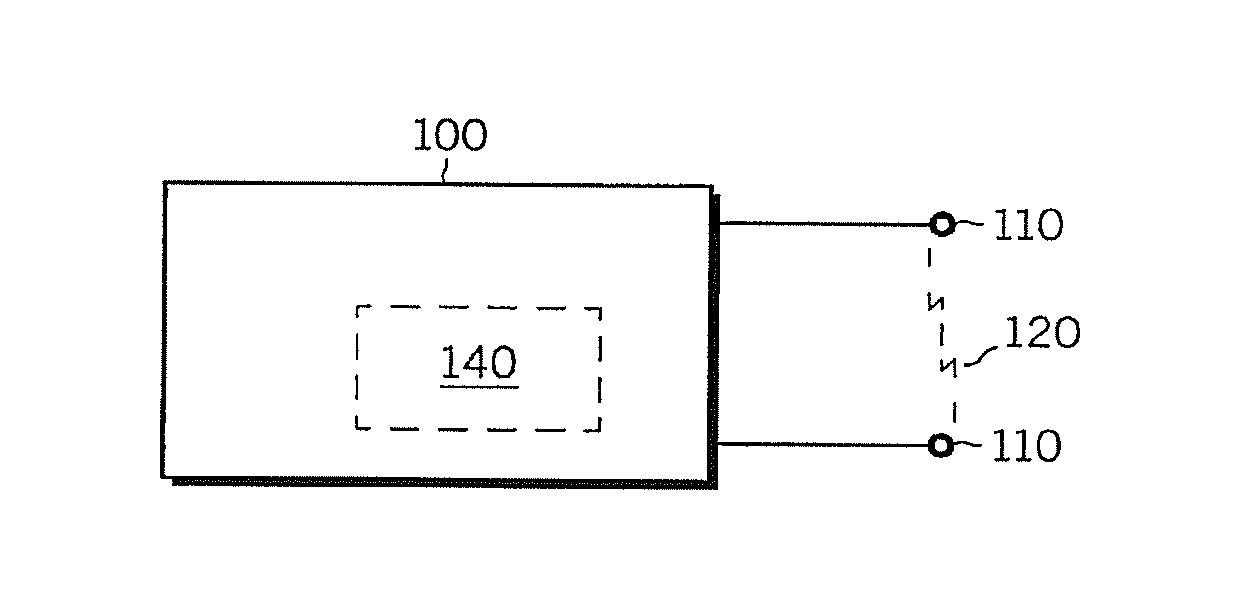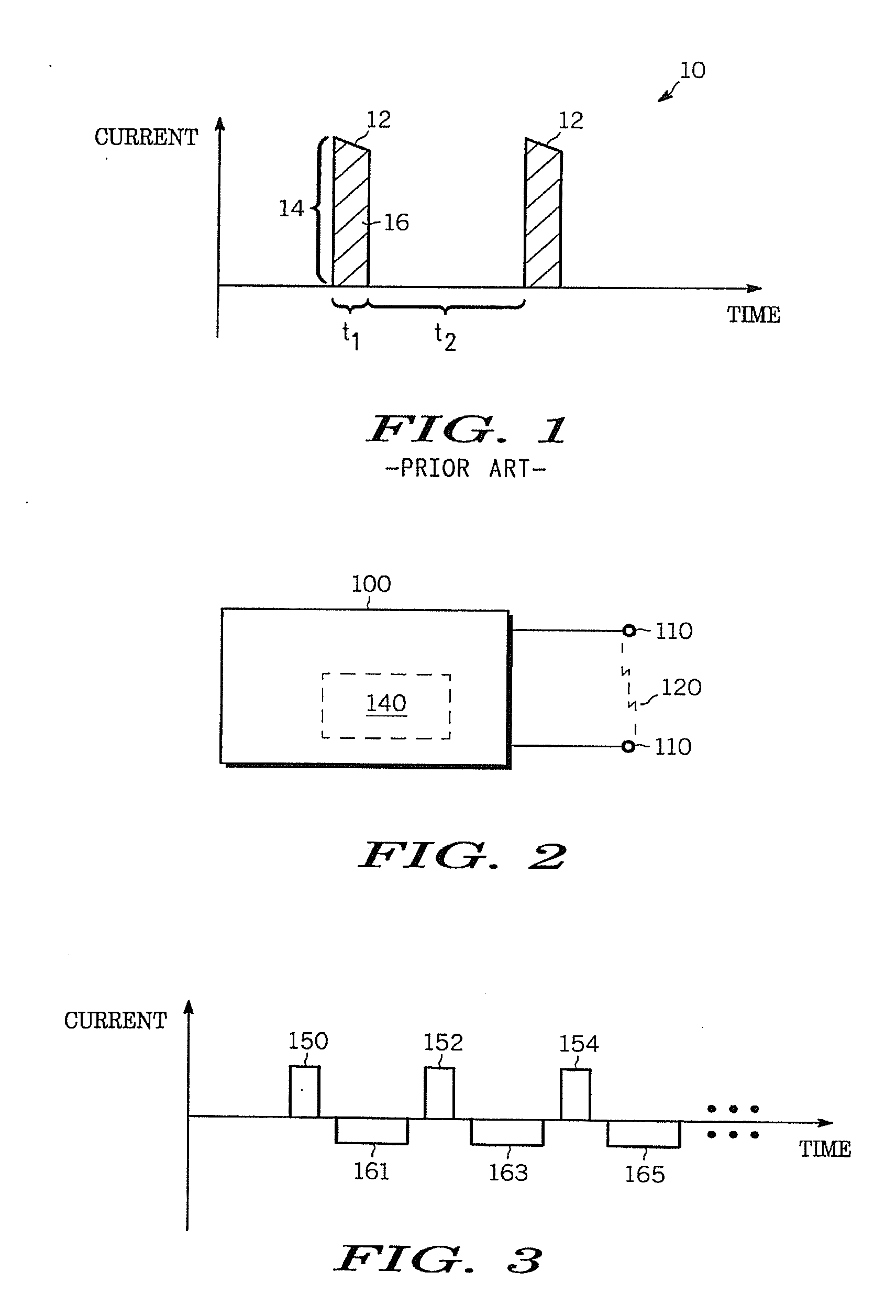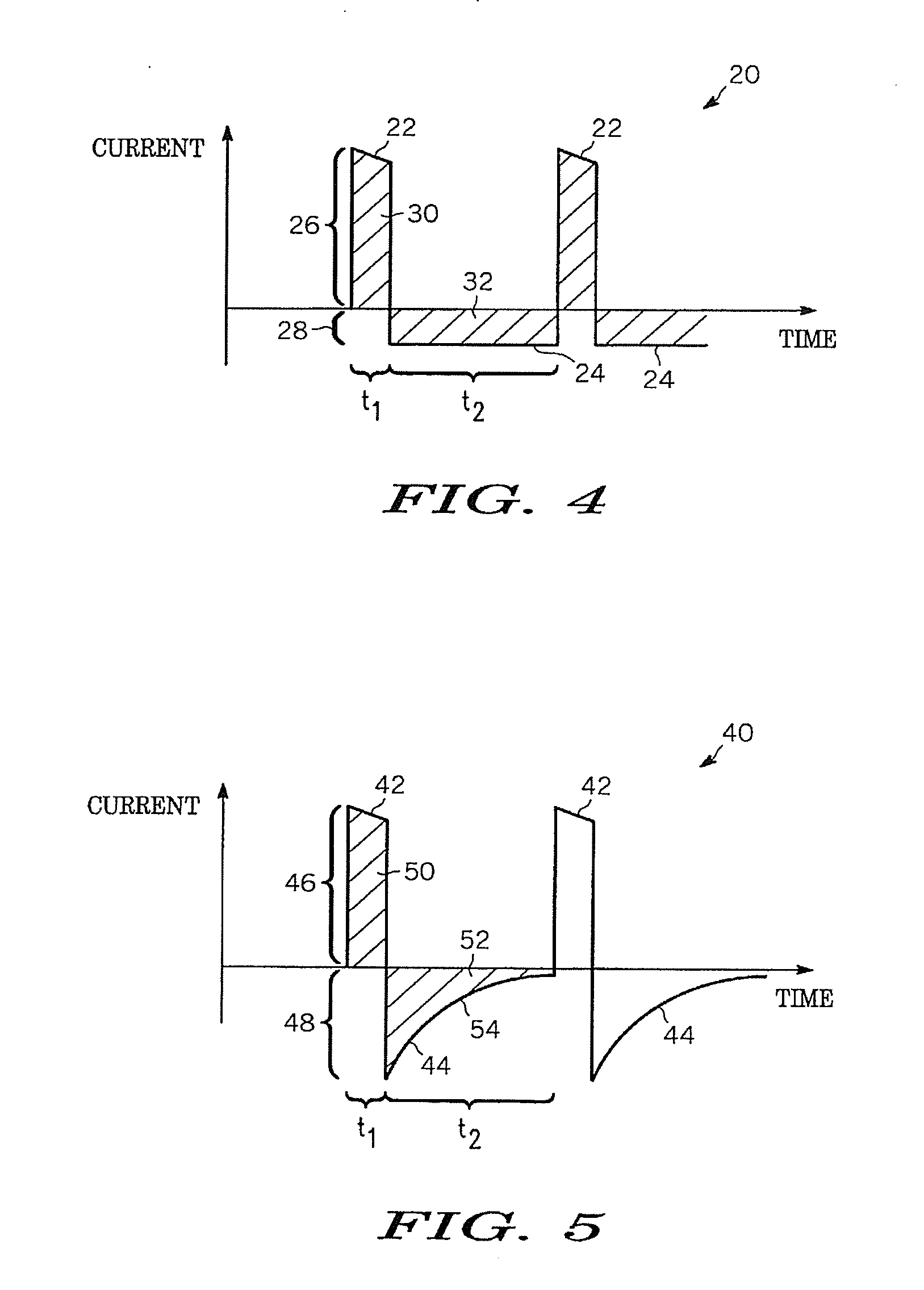Balanced charge waveform for transcutaneous pacing
a charge waveform and charge waveform technology, applied in electrotherapy, heart stimulators, therapy, etc., can solve the problems of long-term transcutaneous pacing, high impedance of the electrode, and decrease the conductivity between the electrode and the patient, so as to minimize the hydrolysis of the electrode gel
- Summary
- Abstract
- Description
- Claims
- Application Information
AI Technical Summary
Benefits of technology
Problems solved by technology
Method used
Image
Examples
Embodiment Construction
[0021]The following detailed description is merely exemplary in nature and is not intended to limit the invention or the application and uses of the invention. Furthermore, there is no intention to be bound by any expressed or implied theory presented in the preceding technical field, background, brief summary or the following detailed description. As has been mentioned, the invention provides external pacemaker systems and methods that deliver charge-balanced pacing waveforms that alleviate the problems arising from the hydrolysis of the electrode gel. The invention is now described in more detail.
[0022]FIG. 2 is a block diagram of a transcutaneous pacing system 100 according to the invention. System 100 is made as is known in the art. System 100 may be implemented alone, or in conjunction with other systems, such as defibrillation systems, etc. System 100 may be part of what would be used by trained medical personnel, or untrained users in a home or public access situation, or par...
PUM
 Login to View More
Login to View More Abstract
Description
Claims
Application Information
 Login to View More
Login to View More - R&D
- Intellectual Property
- Life Sciences
- Materials
- Tech Scout
- Unparalleled Data Quality
- Higher Quality Content
- 60% Fewer Hallucinations
Browse by: Latest US Patents, China's latest patents, Technical Efficacy Thesaurus, Application Domain, Technology Topic, Popular Technical Reports.
© 2025 PatSnap. All rights reserved.Legal|Privacy policy|Modern Slavery Act Transparency Statement|Sitemap|About US| Contact US: help@patsnap.com



